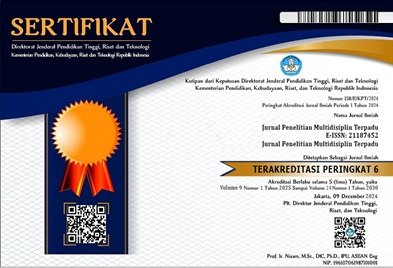ANALISIS ASUHAN KEPERAWATAN PADA BAYI BERAT LAHIR RENDAH DENGAN IMPLEMENTASI PENCEGAHAN HIPOTERMIA MELALUI POSITIONING DAN NESTING DI RUANG PERINATOLOGI RSD. BALUNG JEMBER: STUDI KASUS
Kata Kunci:
Hipotermia, Positioning, NestingAbstrak
Latar Belakang: Bayi Berat Lahir Rendah atau (BBLR) lebih rentan mengalami hipotermia karena memiliki sistem pengaturan suhu tubuh yang belum matang, jumlah lemak subkutan dan jaringan adiposa coklat yang lebih sedikit. Suhu tubuh pada BBLR dapat turun hingga 0,1C -0,3C per menit. Hipotermia pada BBLR dapat dicegah melalui positioning dan nesting. Tujuan: dari studi kasus ini adalah pencegahan hipotermia pada Bayi Berat Lahir Rendah (BBLR) melalui implementasi positioning dan nesting di ruang perinatologi RSD. Balung Jember. Metode: yang digunakan dalam studi kasus ini adalah studi kasus deskriptif dengan bentuk studi kasus mendalam. Pengumpulan data dilakukan melalui wawancara, observasi, pemeriksaan fisik, studi dokumentasi dan pemberian asuhan keperawatan pada BBLR dengan menerapkan implementasi positioning dan nesting selama 3x24 jam. Hasil: implementasi menunjukkan bahwa sebelum diberikan asuhan keperawatan pemberian positioning dan nesting suhu tubuh bayi 36,4C dan suhu tubuh bayi setelah implementasi positioning dan nesting menjadi 36,6C. Implementasi positioning dan nesting dapat meningkatkan suhu tubuh BBLR hingga 0,3C.
Background: Low Birth Weight (LBW) babies are more susceptible to hypothermia because they have an immature body temperature regulation system, less subcutaneous fat, and brown adipose tissue. Body temperature in LBW can drop up to 0.1°C – 0.3°C per minute. Hypothermia in LBW can be prevented through positioning and nesting. Aim: of this case study was to prevent hypothermia in Low Birth Weight (LBW) babies through the implementation of positioning and nesting in the perinatology room RSD. Balung Jember. Method: used in this case study was a descriptive case study in the form of an in-depth case study. Data collection was carried out through interviews, observation, physical examination, documentation studies, and providing nursing care for LBW by implementing positioning and nesting for 3x24 hours. Result: The implementation results show that before the nursing care provided by positioning and nesting, the baby's body temperature was 36.4°C, and the baby's body temperature after implementing positioning and nesting was 36.6 °C. Implementation of positioning and nesting can increase LBW body temperature by up to 0.3 °C.





